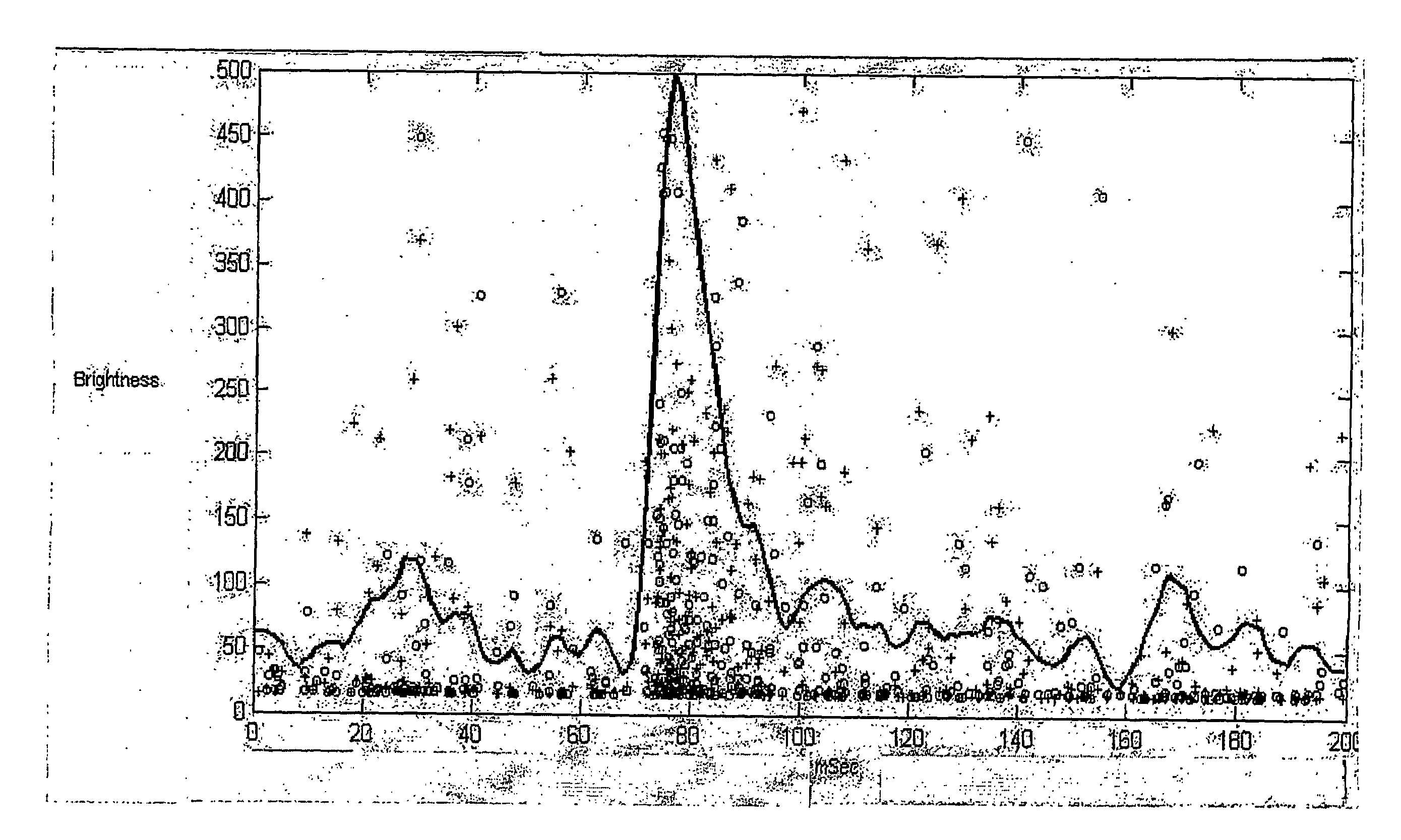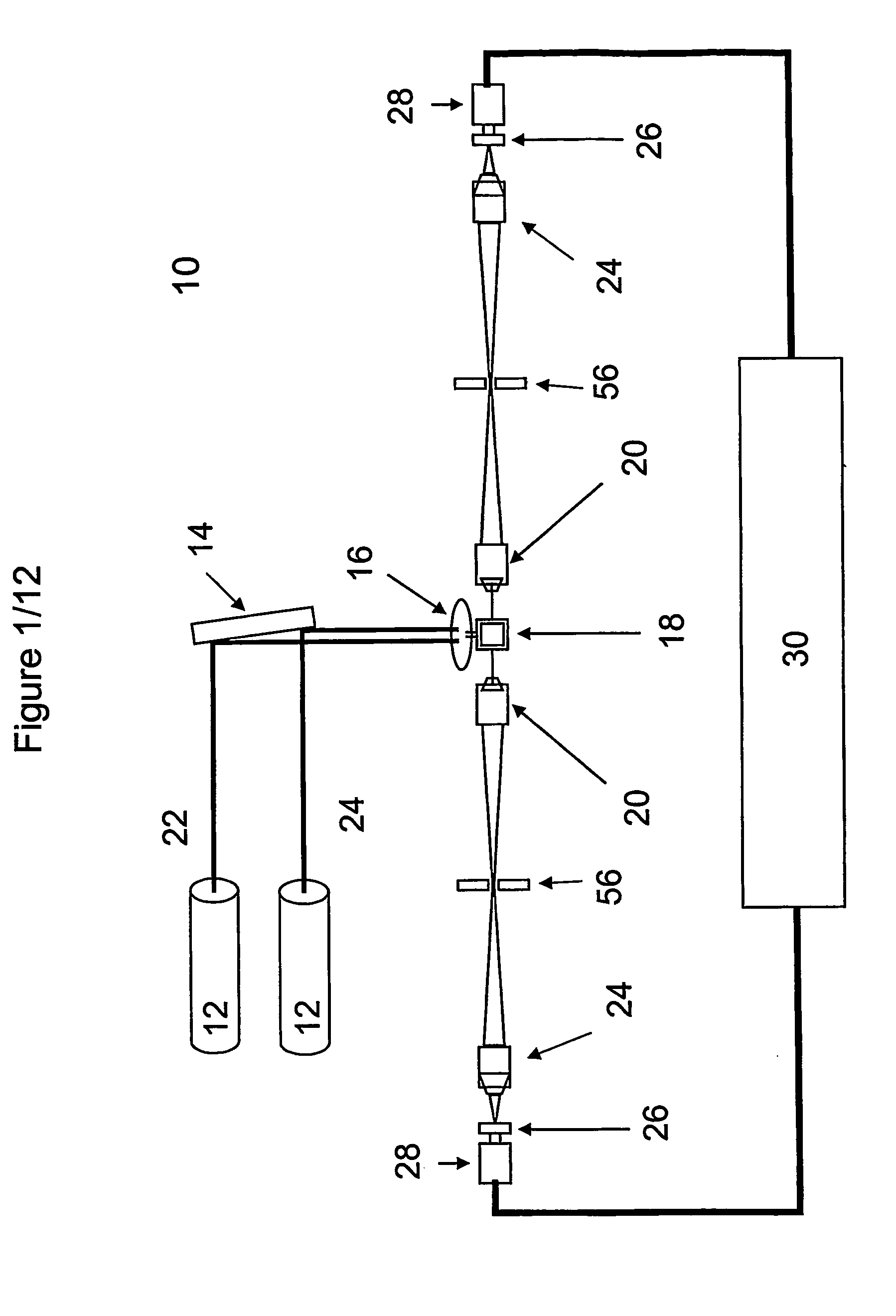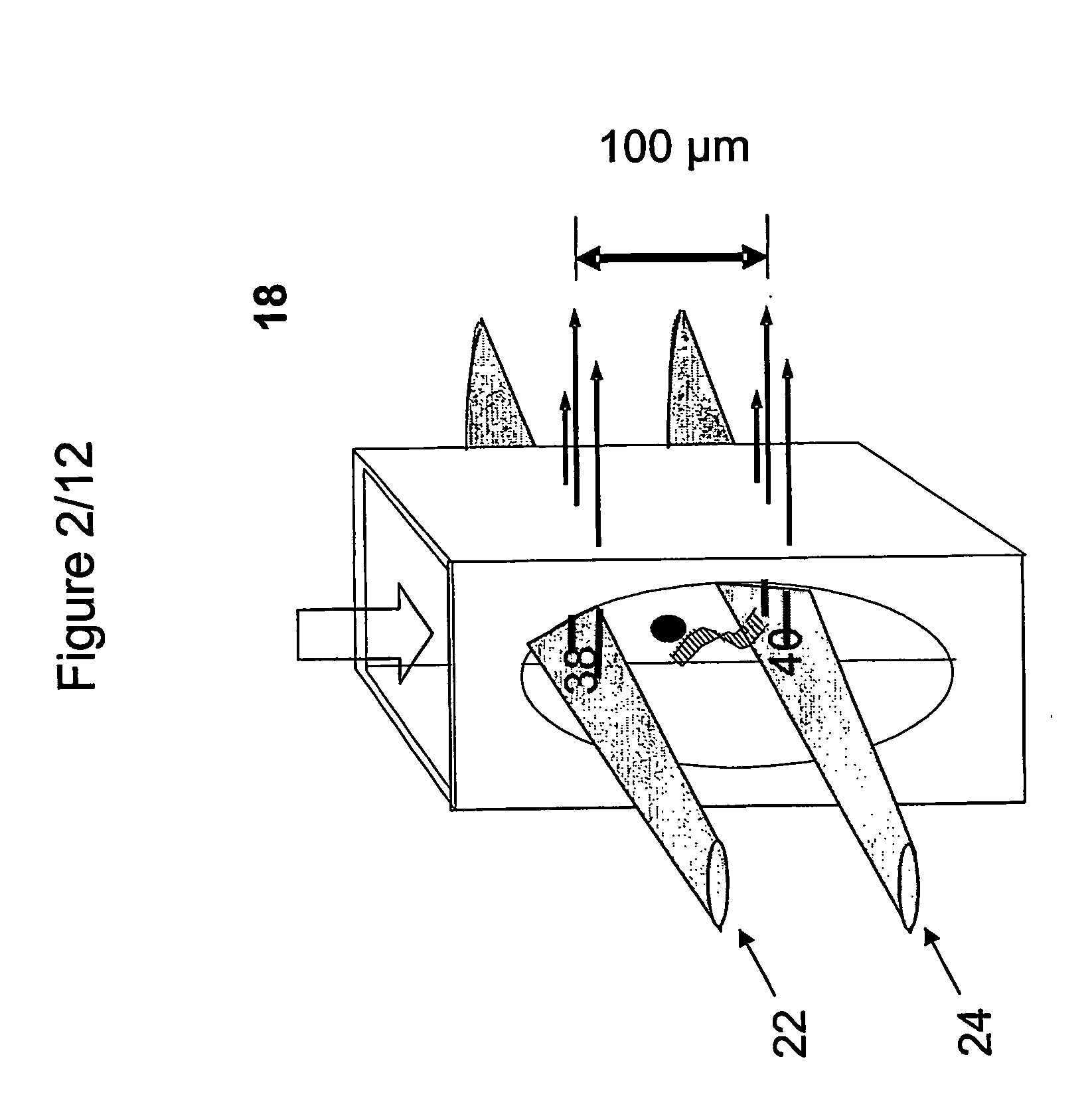Methods for Enhancing the Analysis of Particle Detection
- Summary
- Abstract
- Description
- Claims
- Application Information
AI Technical Summary
Benefits of technology
Problems solved by technology
Method used
Image
Examples
example 1
Detection of Nucleic Acid Targets Moving at Uniform Rate Using Cross-Correlation and Analytical Filters
[0147]1a. Linearized pUC19 was labeled with Alexa Fluor®647 using a ULYSIS® nucleic acid labeling kit (Molecular Probes, Inc., Eugene, Oreg.) according to the manufacturer's instructions. Unbound label was removed and the sample was suspended at 7.5 fM in phosphate buffered saline with 0.01% casein hydrolysate and pumped through the interrogation volumes of the analyzer at 1 μl / min.
[0148]1b. Another sample consisted of a 7.2 kb DNA fragment labeled as above and subjected to electrophoresis at 3000V for 60 seconds in 0.2× TB, 0.01% SDS. Analyzed data is shown in FIG. 3. Panels 3A and 3B show data from 7.5 mM linearized pUC19 moved through the analyzer by pumping. The detected signals were filtered to select those that were greater than two standard deviations above the average background. The filtered signals were cross-correlated and plotted. Dot plots show brightness (y-axis) vs....
example 2
Using Predetermined Electrophoretic Velocity Ranges to Automatically Detect One of Two Particles in a Sample
[0150]An intrinsically fluorescent protein complex, PBXL-3, and a 1.1 kb nucleic acid were used to predetermine characteristic electrophoretic velocity ranges. The nucleic acid was labeled with Alexa Fluor® 647 following the protocol of the ULYSIS® nucleic acid labeling kit (Molecular Probes, Inc., Eugene, Oreg.). The samples were subjected to electrophoresis, and data was analyzed according to the scheme described above, except that analytical filters for brightness and peak width were applied after cross-correlation. The protein complex and nucleic acid were analyzed independently and the characteristic ranges for the peak height, peak width and elapsed time were used to determine windows where each particle was expected to occur (Table 1).
TABLE 1Window 1Window 2(for PBXL3)(for 1.1 kb nucleic acid)Peak>150Width >3 Elapsed Time350-500 ms250-300 ms
Using these characteristics, ...
example 3
Detection and Discrimination of Particles in a Mixture Moving at Uniform Rates Using Cross-Correlation Analysis and Filtering
[0151]An intrinsically fluorescent protein complex, PBXL-3, emits at a high intensity relative to a nucleic acid, linearized pUC19 labeled with Alexa Fluor® 647. The pUC19 DNA was labeled with Alexa Fluor® 647 following the protocol of the ULYSIS® nucleic acid labeling kit (Molecular Probes, Inc., Eugene, Oreg.). Phosphate Buffered Saline (PBS) (10 mM sodium phosphate, 150 mM NaCl, pH 7.2) was supplemented with 0.01% casein hydrolysate (Sigma-Aldrich Corp., St. Louis, Mo.) and used to make dilution series (2.5, 5, 7.5, 10 and 20 fM) of protein alone, nucleic acid alone or mixtures of both. Samples were moved through the analyzer by pumping at 1 μl / min for 4 min.
[0152]Data was analyzed as described above. The detected signals were filtered to select those that were greater than four standard deviations above the average background. FIG. 4A shows plots of cross-...
PUM
 Login to View More
Login to View More Abstract
Description
Claims
Application Information
 Login to View More
Login to View More - R&D
- Intellectual Property
- Life Sciences
- Materials
- Tech Scout
- Unparalleled Data Quality
- Higher Quality Content
- 60% Fewer Hallucinations
Browse by: Latest US Patents, China's latest patents, Technical Efficacy Thesaurus, Application Domain, Technology Topic, Popular Technical Reports.
© 2025 PatSnap. All rights reserved.Legal|Privacy policy|Modern Slavery Act Transparency Statement|Sitemap|About US| Contact US: help@patsnap.com



